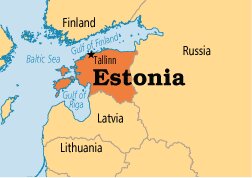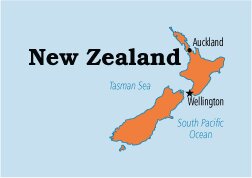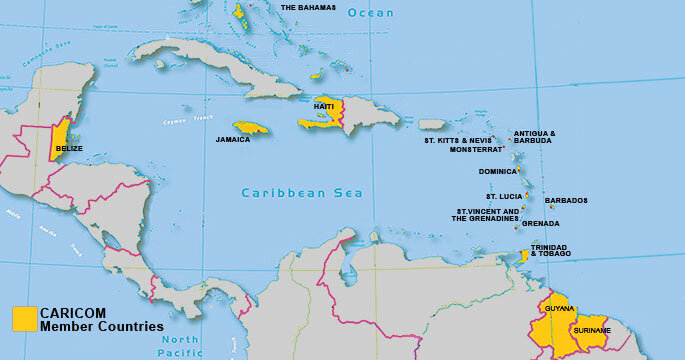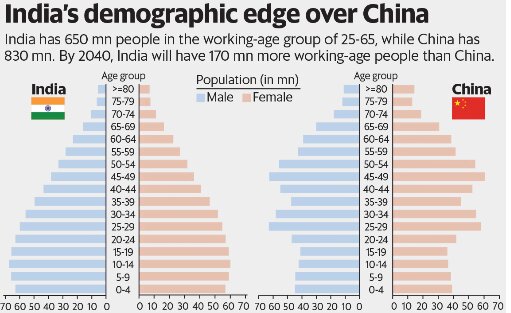Quad and G-4 Meet
The foreign ministers of the Quad countries - India, US, Australia and Japan - met on the sidelines of the UNGA meeting on 27th September 2019.
- The group is seen as a regional counterweight to China and has only met at the Joint or Assistant Secretary level since 2017. The latest meeting is seen as an upgrade by at least three levels.
- The Ministers met to discuss cooperation on counter-terrorism, mentoring, assistance in disaster relief, airtime security, cooperation, development, finance and cybersecurity efforts etc.
- The Quad countries were “resolute” in their view of the centrality of the Association of South East Asian Nations (ASEAN) in South East Asia.
- The notion of ASEAN centrality broadly refers to the group of countries being at the centre of security and strategic frameworks for the Asia-Pacific region.
Quad
- The Quadrilateral security dialogue or Quad was first mooted by the Japanese Prime Minister in 2007.
- However, the idea couldn’t move ahead with Australia pulling out of it, apparently due to Chinese pressure.
- In November 2017, India, the US, Australia and Japan gave shape to the long-pending "Quad" Coalition to develop a new strategy to keep the critical sea routes in the Indo-Pacific free of any influence (especially China).
- Australia is worried about China's growing interest in its land, infrastructure and politics and influence on its universities.
- In the last decade, Japan believes that China has tried to bully it on several territorial issues.
- China has border disputes with India. China is also blocking India’s path into the Nuclear Suppliers Group.
- A weakened US sees the coalition as an opportunity to regain its influence in the Indo-Pacific region.
- India has been hesitant about the Quad, in part because it does not want to isolate China and because it has had a history of staying clear of security alliances.
- Members of the Quad, barring Australia, are currently engaged in the annual Malabar exercises – military exercises that started between India and the U.S. in 1994 and became trilateral (with Japan) in 2015.
- India has not permitted Australia to participate in these exercises, concerned about what message it would send to China, which is wary of the exercise.
G-4 Meeting
- The foreign ministers of G-4 grouping also held a meeting on the sidelines of the 74th session of the United Nations General Assembly (UNGA).
- G-4 is a group of four countries i.e. Brazil, Germany, India and Japan which support each other’s bids for permanent seats on the United Nations Security Council (UNSC)
- The G-4 countries have decided to prepare for a fresh push for reforms at the UNGA in 2020 when the UN celebrates its 75th anniversary.
- It was highlighted that there is a clear need for an enhanced role of developing countries and of major contributors to the United Nations to make the UNSC more legitimate, effective and representative.
- This means that India and Brazil — the two developing countries in G-4 grouping — should get a place along with China, which is the only developing country in the UNSC.
- The countries also put a focus on the role of the African continent in the Council.
- G-4 said that the reforms-related decisions should be by a two-third majority in the UN General Assembly, which was enshrined in the 1998 resolution of the UNGA.
- This is contrary to the position taken by China, which has always said that the decisions should be taken through “comprehensive consensus”.
India-Estonia
Recently, the Prime Minister of India met President of the Republic of Estonia on sidelines of the United Nations General Assembly (UNGA)-74.
- India recognized the Republic of Estonia in 1991 and diplomatic relations were established in the same year
 .
. - Commercial relations between the two countries are good, but considering the size of India and its rapidly developing economy, there is significant room for higher economic engagement.
- Good prospects for co-operation can be found in information technology, biotechnology, and clean energy.
- Major items of export from India to Estonia include articles of leather coffee, tea, spices, and pharmaceutical products, etc.
- Major Estonian exports to India include Iron and steel, fertilizers, electrical machinery, paper,etc.
- India shares strong cultural relations with Estonia.
- The University of Tartu began teaching Sanskrit in 1837.
India-New Zealand
The Prime Minister of India met Prime Minister of New Zealand on the sidelines of UNGA meetings in New York.
- The issues of International Terrorism were also discussed and convergence of views between the two countries on this issue was appreciated.

- India and New Zealand have cordial and friendly relations rooted in the linkages of Commonwealth, Parliamentary Democracy and the English language.
- Bilateral relations between India and New Zealand were established in 1952.
- NZ has identified India as a priority country in its “Opening Doors to India” policy notified in 2011 which was reiterated by New Zealand in 2015.
- India shares Free Trade Agreements (FTAs) with New Zealand which ensures the smooth economic relationship between two countries.
- Both countries are part of the upcoming Regional Comprehensive Economic Partnership (RCEP).
- Also, both countries hold Annual Economic Dialogue since 2009.
- In 2014 ONGC Videsh Limited was awarded oil and gas exploration permits by the New Zealand Government for undertaking offshore hydrocarbon exploration along the Taranaki coast in New Zealand‟s North Island region.
- Indian diaspora and students in New Zealand are an important bridge between the two nations.
India- CARICOM
India’s historic and warm relations with the countries of the Caribbean witnessed a new momentum with the meeting of Prime Minister of India with 14 leaders of the CARICOM group of countries on the sidelines of the United Nations General Assembly in New York.
- The meeting deliberated on the steadily intensifying and deepening relations between India and partner countries of the Caribbean, not only in the bilateral but also in the regional context.
- India has provided immediate financial assistance of USD 1 million to recover from the destruction caused by Hurricane Dorian in the region and the worst-hit island of Bahamas.
- India also announced a USD 14 million grant for community development projects in the CARICOM and another 150 million Line of Credit for solar, renewable energy and climate- change-related projects.
Caribbean Community (CARICOM)
- The Caribbean Community was formed in 1973.
- CARICOM has 15 members – Antigua and Barbuda, Bahamas, Barbados, Belize, Dominica, Grenada, Guyana, Haiti, Jamaica, Montserrat, St. Kitts and Nevis, St Lucia, St. Vincent and the Grenadines, Suriname, and Trinidad & Tobago.
- The Chairmanship of the Community is rotated every six months among the member countries.
- The CARICOM Single Market and Economy are intended to benefit the people of the region by providing more and better opportunities to produce and sell goods and services and to attract investment.
- The Government of India funded the US$ 1.166 million information technology and communication infrastructure, computer software and community studio at the CARICOM Secretariat in 2005-2006.
Population Pyramid
A population pyramid is a graphical representation of the age and sex composition of a specific population.
- It consists of two histograms, one for each gender (by convention, men on the left and women on the right) where the numbers are shown horizontally and the ages vertically.
- The numbers by gender and by age depend on interactions between fertility, mortality and migrations.
- The shape of the pyramid and its variations over the years depend, above all, on the variations in fertility.
- The pyramid can also assume a columnar shape (with vertical sides rather than sloped sides), or have an irregular profile.
India vis-a-vis China
- India’s pyramid is bottom heavy i.e. the Indian population has a larger proportion of children, teenagers and young adults compared to China’s.
- Population Distribution
- India
- The country’s population for the age cohorts of 0-4, 5-9, 10-14 and 15-19 is roughly equal, whereas the numbers for older groups become progressively smaller.
- This means that the country’s younger age groups have stopped growing in numbers now and are likely to shrink slightly soon.
- This, however, does not mean that India’s population will also start shrinking soon.
- Except for the oldest groups, India seems to have more males than females for every cohort.
- China
- The country’s largest cohort is in its late 40s, although it is more gender balanced than its younger cohorts, suggesting that sex-selective abortions are likely to have taken off in the last few decades.
- India
- Working Age Population
- In 25-65 age group, India currently has around 650 million people and China 830 million.
- By 2040, India is likely to reach 900 million, whereas China will have around 730 million.
- In other words, India will go from having 180 million less working-age people than China today to about 170 million more—a net gain of a third of a billion in 20 years.
Way Forward
- Just having people in the working age is not enough. How many are in the labour force and their productivity are important. The government needs to focus on the same.
- India needs to invest more, and efficiently, in human capital and infrastructure.
- For the former, investments in health and sanitation have to be sustained and more Public Private Partnership (PPP) models are required to ensure basic education.
- For the latter, a bigger push for affordable rental housing in cities has to be considered, along with more investments in rail connectivity.
Indigenous Fuel Cell System
On the occasion of the Council of Scientific and Industrial Research (CSIR) Foundation Day, the President of India recently introduced India’s first indigenously developed high-temperature based Fuel Cell System.
- It is developed under the Public-Private Partnership (PPP) model by the Council of Scientific and Industrial Research (CSIR) in partnership with Indian industries.
- It is built under India’s flagship programme named ‘New Millennium Indian Technology Leadership Initiative (NMITLI)’.
Specifications
- The developed fuel cells are based on High-Temperature Proton Exchange Membrane (HTPEM) technology.
- It is a 5.0 kW fuel cell system that generates power in a green manner.
- It takes methanol or bio-methane as the input and produces heat and water as its bi-products, which can be further used.
- This helps to attain an efficiency that is greater than 70%, which is difficult to achieve by other energy sources.
High-Temperature Proton Exchange Membrane (HTPEM) Technology
- High-Temperature Proton-Exchange-Membrane (HTPEM) is the core of the fuel cells that run above 150 °C. It works on two modes of operation with respect to the source of fuel.
- One mode is based on the conversion of natural gas into Hydrogen by means of steam reforming. This mode is used to fulfill stationary power demands.
- Steam reforming or steam methane reforming is a chemical synthesis process for producing syngas (hydrogen and carbon monoxide) from hydrocarbons such as natural gas.
- The second mode is based on the operation of Hydrogen with Oxygen obtained by the process of electrolysis. This is generally used in the space-related applications.
- Electrolysis is a chemical decomposition process in which an electric current is passed through a liquid or a solution containing ions.
Council of Scientific and Industrial Research (CSIR)
- CSIR is an autonomous research and development body established by the Government of India on 26 September 1942.
- It is established under the Ministry of Science and Technology.
- It covers a wide spectrum of science and technology fields from radio and space physics, oceanography, geophysics, chemicals, drugs, genomics, biotechnology, and nanotechnology to mining, aeronautics, instrumentation, environmental engineering, and information technology.
New Millennium Indian Technology Leadership Initiative (NMITLI)
- It is the largest Public-Private-Partnership effort within the R&D domain in the country.
- NMITLI seeks to catalyze innovation centred scientific and technological developments as a vehicle to attain for Indian industry a global leadership position, in selected niche areas. It synergizes the best competencies of publicly funded R&D institutions, academia, and private industry.
- NMITLI has so far evolved 60 largely networked projects in diversified areas viz. Agriculture & Plant Biotechnology, General Biotechnology, Bioinformatics, Drugs & Pharmaceuticals, Chemicals, Materials, Information and Communication Technology, and Energy.
Applications
- This fuel system is most suitable to fulfil distributed stationary power applications demands like in small offices, commercial units, data centres, etc. where highly reliable power is essential with simultaneous requirement for air-conditioning.
- This system will meet the requirement of efficient, clean and reliable backup power generators that are demanded by telecom towers, remote locations, and strategic applications.
- The Fuel Cells fit well in India’s mission of replacing Diesel based Generating (DG) sets with the green and alternate fuels.
- This development is therefore expected to reduce India’s dependence on crude oil.
- The technology has placed India in the league of developed nations which are in possession of such a knowledge base.
Way Forward
- In the field of clean energy, Fuel Cell distributed power generation systems are emerging as a promising alternative to grid power.
- The development of indigenous fuel cell technology carries immense national importance in terms of energy security.
2I/Borisov: An Interstellar Object
The International Astronomical Union (IAU) has officially declared a recently spotted comet as an interstellar object.
- This means that the object, provisionally called Comet C/2019, is now dubbed 2I/Borisov, with the prefix marking that the comet is the second interstellar object scientists have identified to date.
- The first was 1I/'Oumuamua, which was first spotted in October 2017.
- To confirm Borisov origins, scientists tracked the comet's location long enough to study its path.
- Objects born in our solar system are trapped in elliptical orbits around the sun while interstellar bodies follow the hyperbolic path.
- IAU confirmed that 2I/Borisov has a more hyperbolic path than any other comet scientists have studied to date.
- The name Borisov honours its discoverer, astronomer Gennady Borisov from Crimea.
International Astronomical Union
- The International Astronomical Union (IAU) was founded in 1919, headquartered in Paris, France.
- Its mission is to promote and safeguard the science of astronomy in all its aspects, including research, communication, education and development, through international cooperation.
- It is the global authority for naming planetary features in the solar system.
Significance
- The new finding suggests that such objects may be sufficiently numerous to provide a new way of investigating processes beyond our planetary systems.
- Investigating interstellar objects can provide unique data about other star systems without actually flying to them.
- They might provide unique insights into the evolution and composition of other star systems and exoplanets in them.
- These objects have probably been travelling between star systems for hundreds of years. As a result, they have undoubtedly picked up material along the way or bear the marks of encounters with other objects or forces.
- Their composition and surface features can tell us about the interstellar medium.
Right Livelihood Award
The Swedish teenage climate activist Greta Thunberg was recently awarded the Right Livelihood Award-2019, also known as Sweden's alternative Nobel Prize.
- She shares her award with the three other global leaders namely:
- Brazilian indigenous leader Davi Kopenawa who secured the land rights of the Yanomami people.
- Chinese women's rights lawyer Guo Jianmei.
- Western Sahara human rights defender Aminatou Haidar.
Yanomami Tribe
- The Yanomami are the largest relatively isolated tribe in South America.
- The Yanomami people live in large circular and communal houses called Yanos or Shabonos.
- They live in the rainforests and mountainous regions of Northern Brazil and Southern Venezuela.
- The award was founded by the Swedish-German philanthropist and stamp collector Jakob von Uexkull after the Nobel foundation rejected his proposal to establish two new Nobel Prizes, one environmental award and the other award to promote knowledge and perspectives of people in poor countries.
- Because of its founding history and the associated efforts to promote sustainability, social justice, and peace, it came to be known as alternative Nobel Prize.
- She won the award for her inspiring, unending, and amplifying efforts that demanded urgent global action from the world’s political leaders regarding climate change.
- Her FridaysForFuture campaign inspired millions of young people throughout the world to come onto the streets and demand suitable necessary actions from their respective governments.
- Recently, the students within India also protested at several places across the nation in order to be a part of the global protests against climate change.
World Tourism Day
The United Nations World Tourism Organisation (UNWTO) has chosen India as the host country to observe World Tourism Day 2019.
- The theme for this World Tourism Day is ‘Tourism and Jobs: A better future for all’.
- It is celebrated every year on September 27 around the world.
- The purpose of World Tourism Day (WTD) is to foster awareness among the international community on the importance of tourism and its social, cultural, political and economic value.
- The event seeks to address global challenges outlined in the United Nations Sustainable Development Goals (SDGs) and highlight the contribution the tourism sector can make in reaching these goals.
United Nations World Tourism Organisation
- The World Tourism Organization (UNWTO) is the United Nations Specialised Agency responsible for the promotion of responsible, sustainable and universally accessible tourism.
- It was established in 1975 with headquarters at Madrid, Spain.
- UNWTO encourages the implementation of the Global Code of Ethics for Tourism, to maximize tourism’s socio-economic contribution while minimizing its possible negative impacts.
World Digital Competitiveness Ranking
India has jumped four places from 48th place in 2018 to 44th rank in 2019 in World Digital Competitiveness Ranking (WDCR).
- The country has improved overall in all factors -- knowledge, technology and future-readiness -- as compared to the previous year's ranking.
- The biggest improvement is in the technology sub-factor level, holding the first position in telecommunications investment.
- Top Countries: The US was ranked as the world's most digitally competitive economy, followed by Singapore in second place.
- Largest Jump: The largest jump in the overall ranking was registered by China, moving from 30th to 22nd, and Indonesia, from 62nd to 56th.
World Digital Competitiveness Ranking
- The Ranking, produced by the International Institute for Management Development (IMD) World Competitiveness Center, measures the capacity and readiness of 63 nations to adopt and explore digital technologies as a key driver for economic transformation in business, government and wider society.
- To evaluate an economy, WDCR examines three factors:
- Knowledge: the capacity to understand and learn the new technologies;
- Technology: the competence to develop new digital innovations;
- Future readiness: the preparedness for the coming developments.

